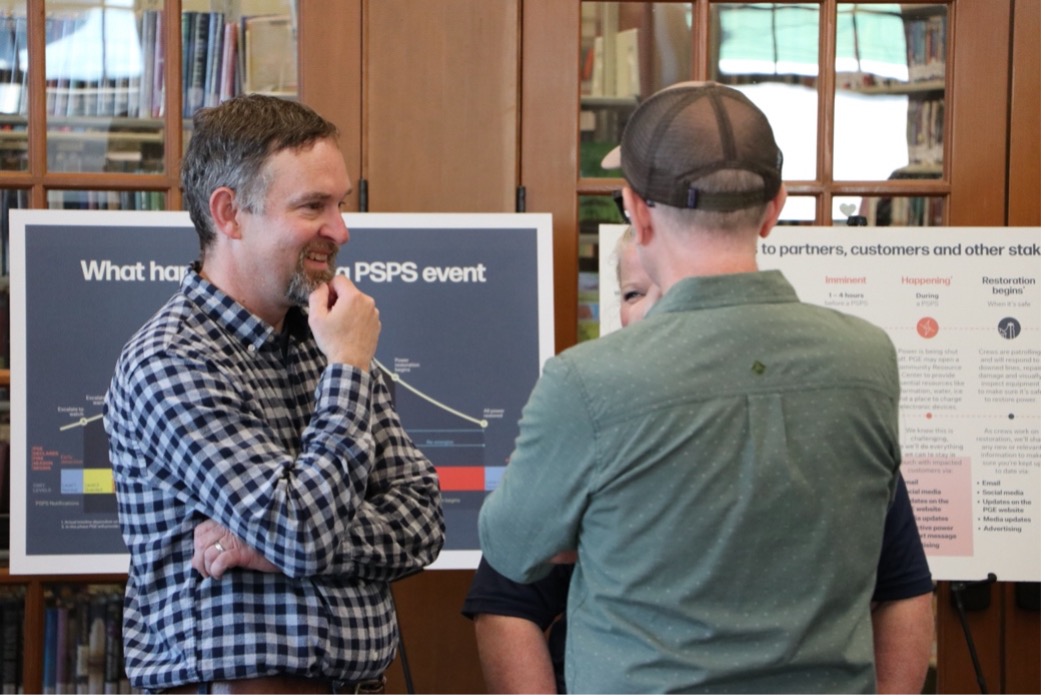
Wildfire Safety & Prevention
Learn about what we're doing to help protect people, property and natural environments during wildfire season and year-round.
Check out ways you can prepare for wildfire season.
How we prepare for wildfires
Fire season is when the combination of environmental factors and human activity increases the risk for wildfire. Wildfire season typically extends from May through October, but we do prevention work all year long. This includes:
Innovative technology and equipment, like fire-resistant poles, remote monitoring and much more
Inspecting, trimming and removing trees and shrubs that could cause trouble along our transmission and distribution lines
Heightened safety protocols and changes to the way we operate our system in certain areas
Changes to work practices including the addition of fire-related tools and equipment on trucks for our crews
Enhanced monitoring and communication in coordination with fire agencies, other public sector resources and utilities
Public Safety Power Shutoffs (PSPS), a last-resort safety measure to help protect lives and property
Innovative technology to prevent fires
Smarter fire detection

AI cameras monitor fire-prone areas across our service territory around the clock. This groundbreaking technology enables faster responses, helping reduce risk and support safety for the communities we serve.
We have a network of wildfire monitoring cameras providing 24/7 visual observation of the landscape in and around Portland as well as large portions of PGE’s service area that alert PGE and public safety partners to potential wildfire ignitions.
Anyone can access PGE’s wildfire camera network,
used by emergency management and firefighting agencies, to stay informed about potential fire risks, make timely safety decisions, and continue to collaborate on fire prevention efforts.
More ways we prepare
Year-round efforts
The safety of our customers and communities is one of PGE’s top priorities. We proactively and comprehensively work year-round across our service area to reduce the risk and impact of wildfires.
System hardening and equipment upgrades. We proactively maintain and upgrade our equipment to increase resilience, reduce outages and mitigate wildfire risk.
Deliberate and targeted approach to converting overhead power lines to underground power lines in High Fire Risk Zones.
Since 2019, we have installed almost 1,000 iron utility poles in specific areas to make our system more resilient against wildfire.
Installing covered conductor, which is an insulated overhead power line designed to bolster power reliability and reduce wildfire risk.
Vegetation Management. Our service area includes more than 2.2 million trees and approximately 12,000 miles of overhead power lines. We conduct routine, year-round tree-trimming and vegetation management. In addition to routine tree-trimming, we also conduct enhanced vegetation management in High Fire Risk Zones.
Remote monitoring. We have a network of high-definition AI fire detection cameras that provide 24/7 visual observation of our High Fire Risk Zones as well as large portions of PGE’s service area. These systems alert PGE and public safety partners to potential wildfire ignitions and provide 360-degree fire detection triangulation capability, accurate to within 100 yards.
Weather monitoring. PGE’s meteorologists monitor weather conditions daily. Our network of weather stations provides detailed weather data, which supports making operational decisions, including when we should initiate a Public Safety Power Shutoff (PSPS). We share our weather station data publicly to improve regional forecasting and aid in the analysis of extreme weather events.
Smart Grid technology. We have protective devices in our High Fire Risk Zones that sense when there is a problem on the line (for example, if a branch or other debris contacts it) and automatically shuts off the electricity to prevent damage.
These smart switch devices can also be controlled by grid operators to increase operational flexibility, reduce outage duration and minimize the number of customers experiencing a Public Safety Power Shutoff (PSPS).
These devices generate additional benefits by improving reliability in all seasons for customers and providing additional situational awareness for PGE.
Coordination. We work closely with local, state and federal agencies and Tribes to plan for wildfire and other emergencies. Collaborating with and maintaining strong relationships with these organizations helps us coordinate and plan for emergencies before they happen, so if an emergency happens, we are ready to work together.
Enhanced powerline safety settings. To help prevent wildfire, we operate our electric system more conservatively in select locations during fire season and on days when there is increased fire risk due to factors like high winds, dry conditions, or high temperatures.
Community involvement
Wildfire prevention takes all of us. We work closely with local, state and federal land and emergency management agencies, US Forest Service, Bureau of Land Management, Oregon Department of Forestry, Tribes, fire districts and emergency responders to plan and coordinate on wildfire prevention and response. Here's how you can get involved.

Invite us to speak at your event
Still have questions or don't quite know what to ask? We get it! That's why PGE employees are available to speak at your business, community or school event. Request a PGE representative

Wildfire Ready Events
Our wildfire plans include you! Every spring, we host Wildfire Ready events where you can learn about our Wildfire Mitigation Plan (WMP) and share your thoughts as we develop next year's plan. If you have questions before next year's events, contact us.
News and alerts
News
Get the latest information and company statements about recent outages.
Mobile app
Get alerts from the PGE mobile app for Android and iPhone
.